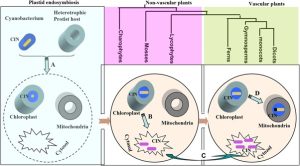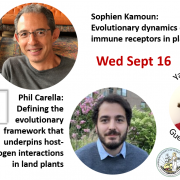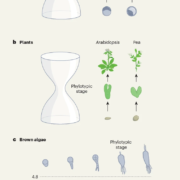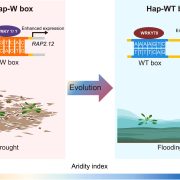Evolution of cytosolic and organellar invertases empowered the colonization and thriving of land plants
 Invertases catalyse the conversion of sucrose into glucose and fructose. In plants, invertases fall into two clades – the mitochondrially/plastid localized α clade and the cytoplasmically localized β clade. However, we do not fully understand how these clades evolved. Here Wan et al. identified 665 invertases from 77 species across the plant kingdom. Phylogenetic analysis showed that invertases first appeared in charophyte algae due to endosymbiotic gene transfer from a cyanobacterium. The α1 clade, a plastid localised subgroup of the α clade, are the most basal invertases. Examination of N-terminal sequences revealed that α1 invertases are approximately 100 bp longer than β clade invertases. Combining this with phylogenetic analysis revealed that the β clade arose from duplication and subsequent loss of the transit peptide of the α1 clade. This happened before land plants diverged from charophyte algae. The α1 clade underwent an additional duplication event as vascular plants emerged, which led to the generation of the mitochondrially localised α2 clade. Collectively these results shed light on invertase evolution, and the authors suggest this was important for allowing plants to colonize land. (Summary by Rose McNelly @Rose_McN) Plant Physiol. 10.1093/plphys/kiad401
Invertases catalyse the conversion of sucrose into glucose and fructose. In plants, invertases fall into two clades – the mitochondrially/plastid localized α clade and the cytoplasmically localized β clade. However, we do not fully understand how these clades evolved. Here Wan et al. identified 665 invertases from 77 species across the plant kingdom. Phylogenetic analysis showed that invertases first appeared in charophyte algae due to endosymbiotic gene transfer from a cyanobacterium. The α1 clade, a plastid localised subgroup of the α clade, are the most basal invertases. Examination of N-terminal sequences revealed that α1 invertases are approximately 100 bp longer than β clade invertases. Combining this with phylogenetic analysis revealed that the β clade arose from duplication and subsequent loss of the transit peptide of the α1 clade. This happened before land plants diverged from charophyte algae. The α1 clade underwent an additional duplication event as vascular plants emerged, which led to the generation of the mitochondrially localised α2 clade. Collectively these results shed light on invertase evolution, and the authors suggest this was important for allowing plants to colonize land. (Summary by Rose McNelly @Rose_McN) Plant Physiol. 10.1093/plphys/kiad401









